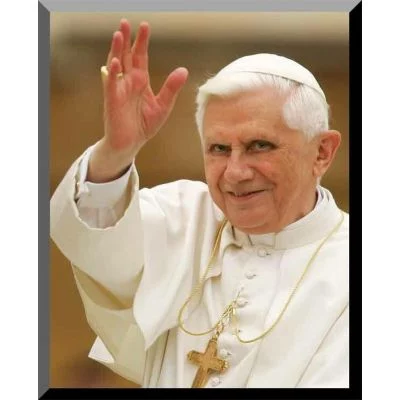
Pope Benedict XVI and Catholic Education

As Pope Benedict XVI is buried this morning at the Vatican, I have reflected on the only occasion when I heard him speak in-person. In 2008 the Pope visited the United States and during that visit he called a meeting of the presidents of Catholic colleges and universities. We met at Catholic University. Here is the video of the address, worth watching, and also the text here:
In advance of this meeting at Catholic University, many conservative commentators opined that the Pope would use the occasion to smack down American Catholic higher education for being too liberal, for failing to uphold orthodoxy. The critics were salivating.
In fact, the Pope did nothing of the sort. His address was thoughtful, scholarly, and affirming. He called the commitment to Catholic education in the United States “an outstanding apostolate of hope” and he cited the historic examples of religious women now saints — Elizabeth Ann Seton, Katharine Drexel — who led the creation of educational ministries to marginalized persons, particularly African Americans and Native Americans. He called Catholic educators to be faithful to the teachings of the Church as essential to the work of Catholic education, but he did so in a way that was affirming and forward-looking.
For Catholic higher education and our faculty, most importantly, the Pope affirmed the “great value of academic freedom,” saying:
“In regard to faculty members at Catholic colleges universities, I wish to reaffirm the great value of academic freedom. In virtue of this freedom you are called to search for the truth wherever careful analysis of evidence leads you. Yet it is also the case that any appeal to the principle of academic freedom in order to justify positions that contradict the faith and the teaching of the Church would obstruct or even betray the university’s identity and mission; a mission at the heart of the Church’s munus docendi and not somehow autonomous or independent of it.”
The Pope’s wise and thoughtful address was also very smart; presidents and faculty who went into the meeting fearing chastisement left thinking differently, admiring the Pope and being more open to the message about how we must balance our freedom with our responsibility to teach in fidelity to the Church’s mission.
In the week since his death, many commentators have explored the complex dimensions of Pope Benedict’s papacy, and his transformation from the doctrinal enforcer he was as Cardinal Joseph Ratzinger to the more pastoral and reflective pope he became. He succeeded someone who is arguably one of the great popes of all time, Saint Pope John Paul II, a gregarious world traveler and charismatic figure on the world stage for several decades. He struggled with the demands of the job, and the relentless evidence of the sex abuse crisis that undermined so much of the Church’s credibility in the modern world. Some say his greatest contribution was his surprise resignation in 2013, an act that led to the election of Pope Francis I, a completely different pope in world view, personality and action — and yet someone equally concerned about fidelity to Church teaching. Benedict and Francis lived with the “two popes” phenomenon and in their overt respect for each other they presented a new, modern image of how the papacy can still be relevant in the modern world.
Rest in Peace, Pope Benedict.